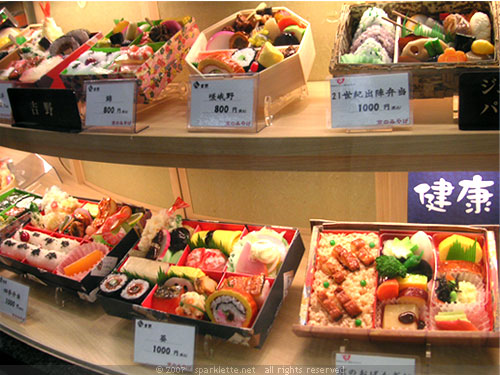Jan 25 2012
Train Travel in Japan
Transfers from Narita to Tokyo
Narita airport is 90km from downtown Tokyo.
The JR Express train connects the two – stopping in Tokyo at Tokyo Central, Shibuya and Shinjku.
(JR – Japan Railways)
Whereas you can often save money by ask purchasing unreserved seats when traveling by train in Japan, all seats on the Narita express are reserveds seats.
Tickets are ¥3108 – about $39 – children half price.
At the airport (Terminal Two), turn right when leaving customs to walk to the JR station.
You can use the automatic ticket machines, but if paying by credit card our experience was that it is better to pay in the JR ticket office.
The trip takes about 90 minutes.
On the return trip, it is worth noting that Qantas and Jetstar leave from Terminal 2 – the 2nd last stop.
Trains depart about every 30 minutes in each direction, leaving Shinjuku at 10 past and 20 to the hour.
Train Travel in Tokyo.
Tokyo has an excellent metro system, and maps are available in most stations.
To complicate things – some routes are serviced by JR trains, some by the Toei subway system, and others by the Tokyo Metro system. You need a different ticket depending in which you are traveling. Generally, you can get by just using the Metro, which makes buying tickets less complicated.
This Subway Map shows all the metro lines and the JR lines.
To use the ticket vending machine for the Metro, look up your destination on the large map of the network above the machines on the wall. It will tell you the ticket price needed to go to your destination. If your journey requires a transfer from one line to another, the one ticket will suffice for each leg (it will be returned to you each turnstile until you reach your destination, where it will be retained).
On the machines,
1) Press the button ‘English’
2) Press the button ‘Ticket’
3) Prsss the appropriate amount of yen for your destination.
4) Use the pictorial buttons on the left to select the combination of adult/child tickets you need
5) Insert the total amount required. You can enter a ¥1000 or ¥5000 note, but it is a good chance to get rid of some of the shrapnel you collect.
At each destination there are fare adjustment machines. You can Insert your ticket to find out if you have underpaid for the trip.
If you are unsure of the correct fare, when buying your ticket you can always just buy the cheapest possible ticket, and top it up if necessary at the fare adjustment machine when you get to your final stop..
Although its more fun to play with the map. you can cheat by using the online fare and route checker available here.
If you have a number of trips planned, you can buy a one day pass for unlimited Metro rides for ¥710 from the machines, or ¥1000 if you want to include the Toei lines.
A one day pass for Metro, Toei and JR costs ¥1580, also available from the machines or from the JR ticket office.
This video is for US servicemen – How to Buy a Ticket.
The Shinkasen
Japan is famously well serviced by a high speed rail network – The Shinkasen.
You need two tickets when travelling on a Shinkasen – one normal ticket and then a supllementary ticket for the express service. You can choose reserved or unreserved seats – reserved cost an extra ¥500 or so – about $6. We found it best to purchase tickets from the office rather than the machines.
The Tokyo-Nagarno service runs about hourly and costs ¥7460 (about $93) for unreserved seats, half for children.
The Tokyo-Kyoto route has even faster Nozomi trains which costs ¥13520. ‘Normal’ shinkasen also service this route (¥13020)
You can check the fares for other routes here.
Bento Boxes
It is ‘compulsory’ when travelling on Shinkasen trains to purchase a Bento Box from the platform to eat while travelling.
JR Rail Pass
If you are travelling frequently, a JR pass may be worthwhile. It never worked out for us.
A 7 day pass cost ¥28300 ($353). It entitles free travel on all JR rail trains, including reserved seats on Shinkasen, except Nozomi Shinaksen.





 RSS - Posts
RSS - Posts


I know how much you love Bento Boxes, so which one was your favourite!